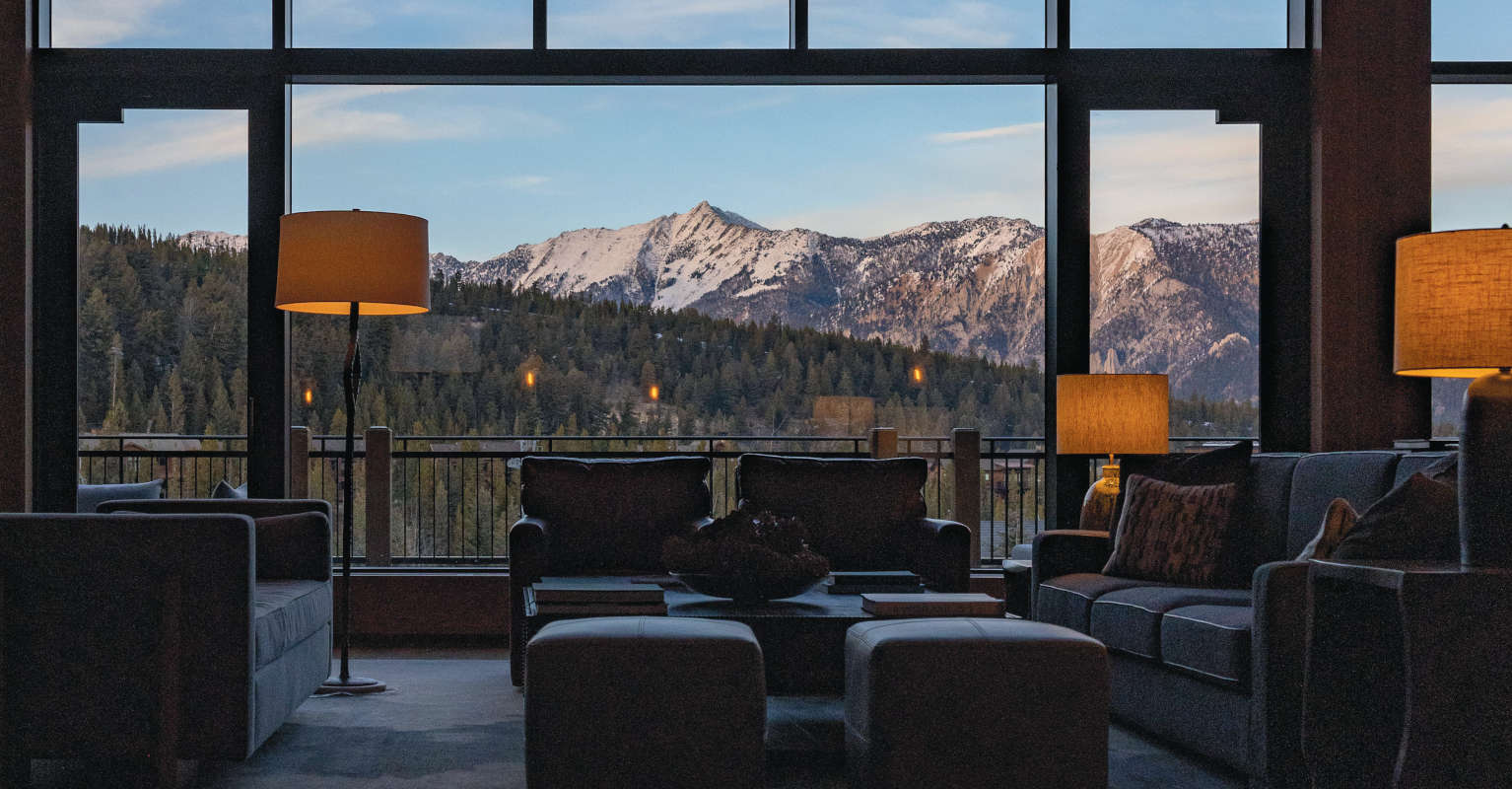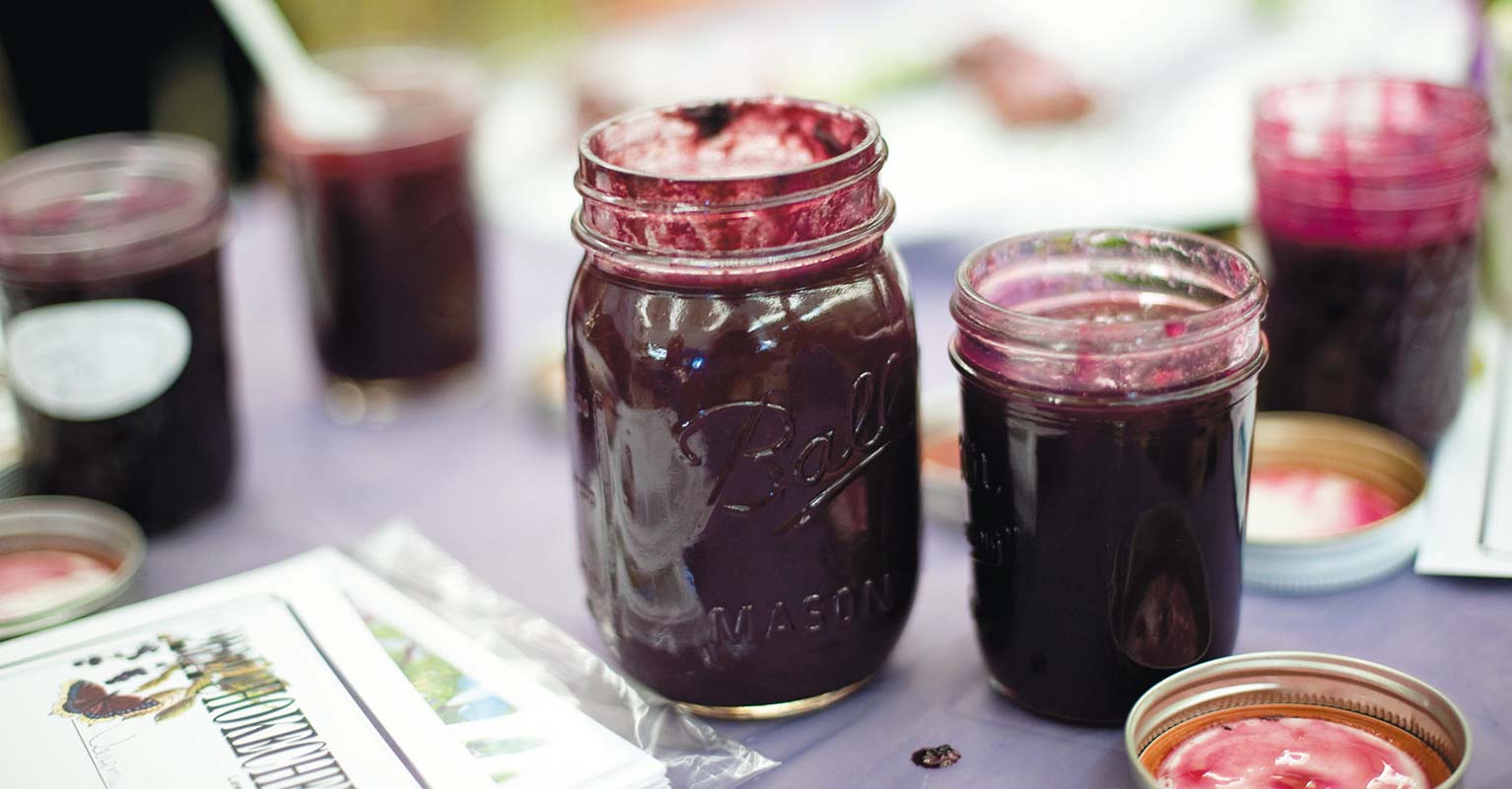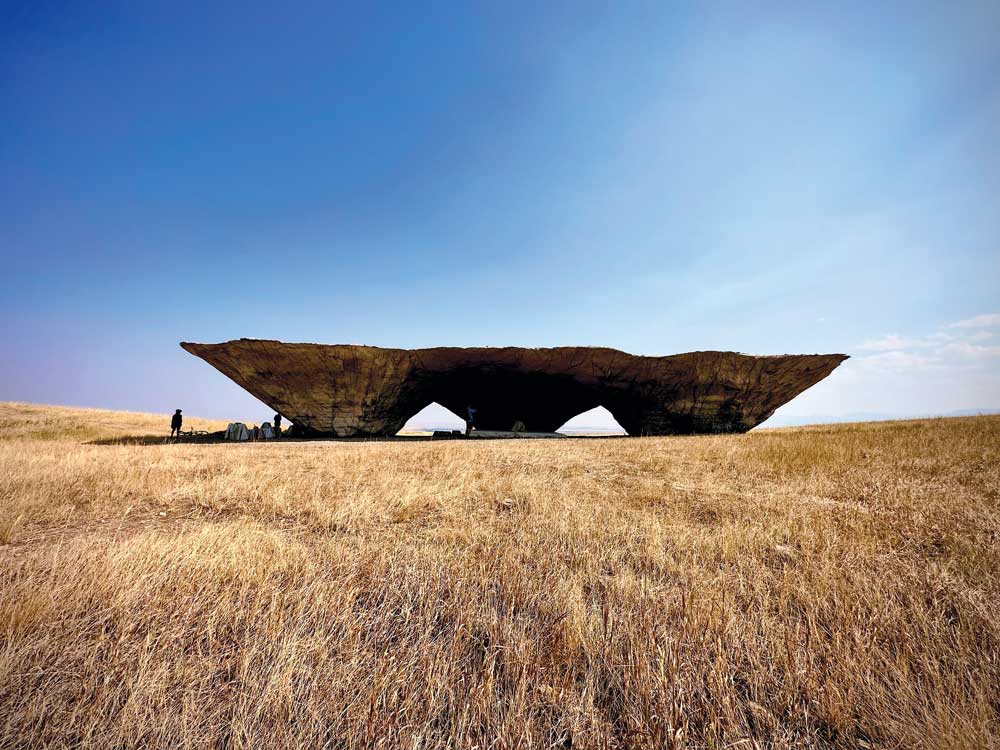A husband-and-wife chef and gardener team works closely to manage Norris Hot Springs’s kitchen and garden, keeping menu items fresh and inspired.
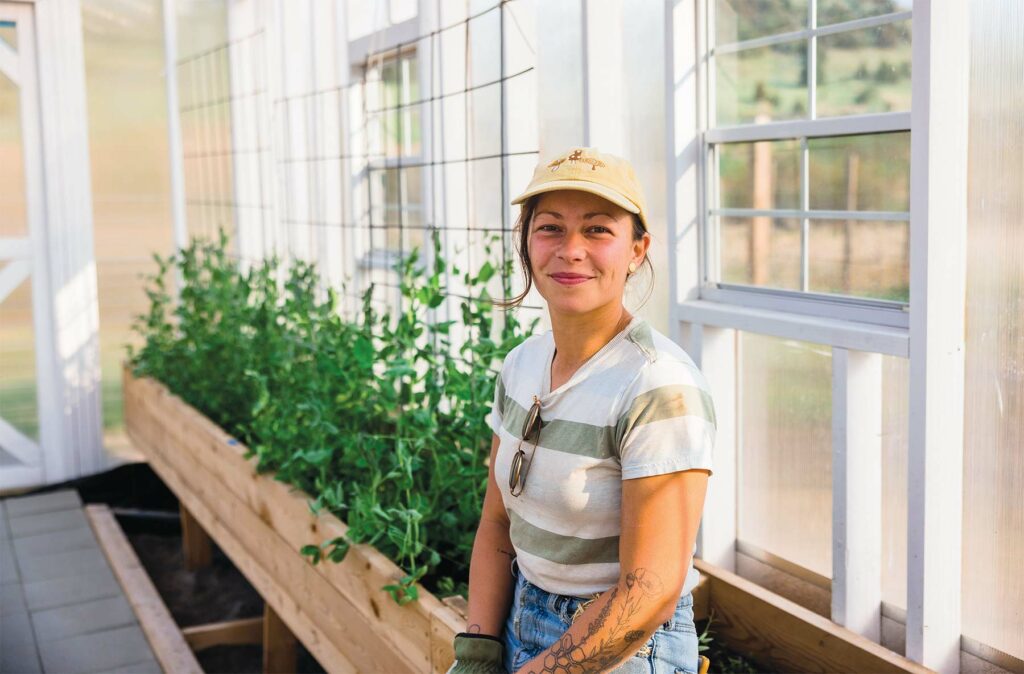
Norris Hot Springs Grows a Commitment to Local Food
Forty-five minutes southwest of Bozeman, past the Warm Springs boat launch on the Madison River and around a series of bends in the road, a sign advertising “Water of the Gods” directs my left turn off of Highway 84. I have arrived at Norris Hot Springs.
Though the place is renowned for its namesake hot springs pool, today I’m not here for a soak. Instead, Dillon Campbell, general manager at Norris, accompanies me to a large greenhouse, where he pulls up a couple of chairs. Besides being the quietest spot on the property and offering welcome warmth on a windy spring day, our meeting location is fitting: I’m here to learn about Norris’s greenhouse, gardens, and grill.
In the United States, fresh produce typically travels over 1,500 miles before it reaches a consumer. Campbell tells me that when the current owner, Holly Heinzmann, bought Norris in 2004, she saw an opportunity to tap into the power of geothermal to expand the health benefits beyond the hot springs themselves by including local food in the Norris experience.
Shortly after, the 50-Mile Grill was born. The name is apt because Norris sources nearly all the food served in the grill from producers located within a roughly 50-mile radius of Norris—much of it from their own gardens and greenhouses.
Though Montana’s long winters shorten a typical growing season, the hot springs at Norris uniquely position the kitchen to serve local food year-round. Geothermal is the naturally occurring heat energy of the earth—specifically, hot water that exists beneath the earth’s surface. At Norris, a solar-powered pump moves water into the greenhouse in a closed-loop system during the day. The heat generated from running the 90-degree water through the greenhouse, combined with stone pavers for heat retention and thermal mass, allows the team to start growing earlier and extend their growing season later than a typical producer in Montana. Last winter, when temperatures dropped to -30 degrees F, the greenhouse maintained temperatures in the 50s, even on days with limited sun. When Campbell and I meet at the very end of April, the team is already on their second growth of greens, having completed their first harvest in early January.
Soil near a hot spring naturally contains a high density of minerals. Campbell tells me that around ten years ago, a soil survey determined Norris Hot Springs’s soil had one of the highest mineral contents in the state. This higher mineral content in the soil supports the growth of leafy greens and yields nutrient-rich vegetables.
“We try to break out of what traditionally is grown in the area,” Campbell says, and the warmer temperature of the greenhouse enables them to do that. This season, that translates to growing non-traditional greens like Thousandhead kale as well as Hanger beans, Dragon Tongue beans, and Yardlong beans that allow the chef to get creative with protein-rich vegetable offerings. The team is also experimenting to see if winter fruit harvesting is possible, and trays of fig, grape, raspberry, gooseberry, pomegranate, and kiwi starts line the floor.
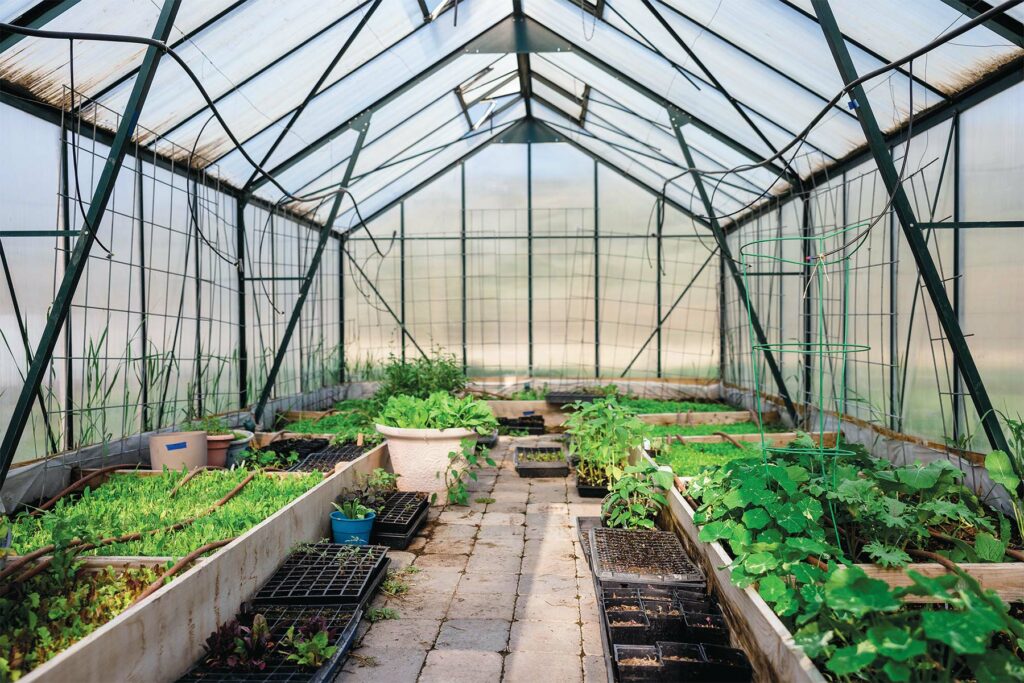
Though Montana’s long winters shorten a typical growing season, the hot springs at Norris uniquely position the kitchen to serve local food year-round.
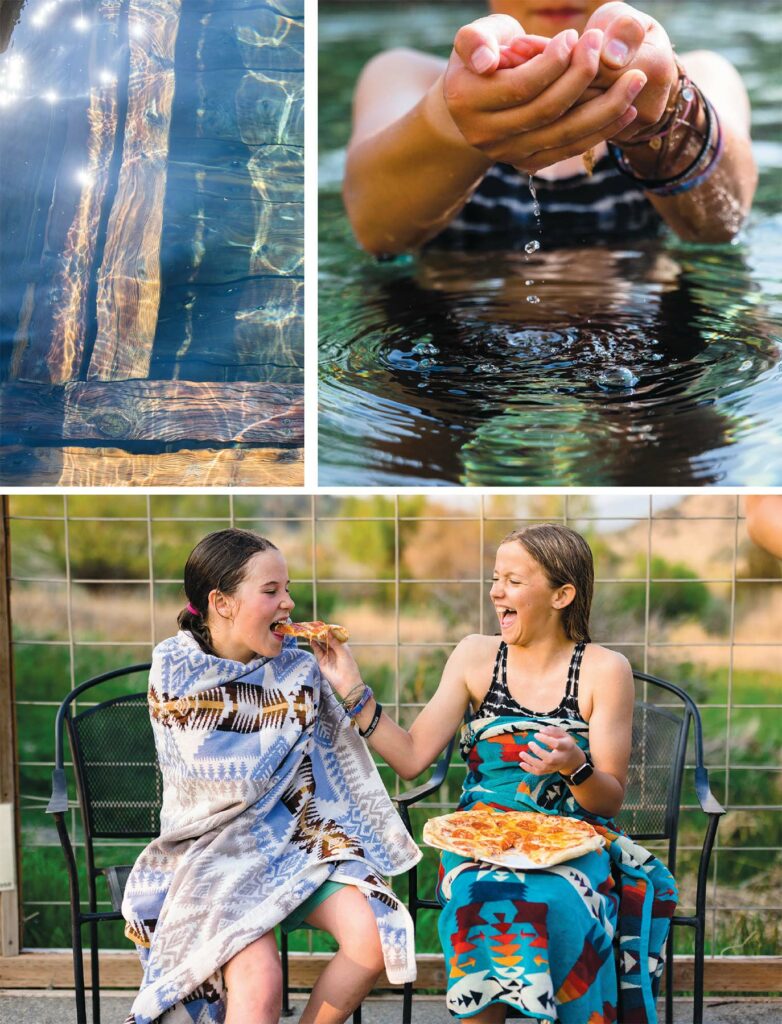
As we walk around the greenhouse, Campbell points out the spinach and arugula that form the base of the grill’s spring salad mix, along with different types of kales, carrots, root vegetables, and peas. The building we’re in is a newer greenhouse. Whereas an older greenhouse on the property was ground-based, this greenhouse’s beds are raised, with mesh on the bottom for faster drainage. Campbell tells me they plan to eventually begin an aquaponics operation, and the drainage will allow them to recirculate the water and maintain a strong nitrogen base.
Meanwhile, an entire section of the greenhouse is devoted to flowers. This year, the team will add beehives to the operation to increase the number of pollinators in the area and to begin harvesting their own honey on site. A high tunnel on the other side of the property will continue to support the flower operation, including sunflowers that bring in more birds.
We wander out of the greenhouse toward the garden beds. Though still early in the growing season, mono garlic starts are already in the ground. Over the course of the season, the garden will grow onions, potatoes, cabbage, cauliflower, broccoli, asparagus, and much more. Across Hot Springs Creek and above the wetlands (host to red-winged blackbirds and nesting sandhill cranes), the property rises in terraces where melons and squash will soon grow. The team will spread bokashi compost bales to help regulate the pH of the soil, and whatever isn’t taken up by the melons and squash will go into Norris’s compost to add back to the soil for the next season.
All told, each year Norris grows over 2,000 pounds of food, and with the bulk of that comprised of large leafy greens, herbs, and beans, that’s a lot of produce!
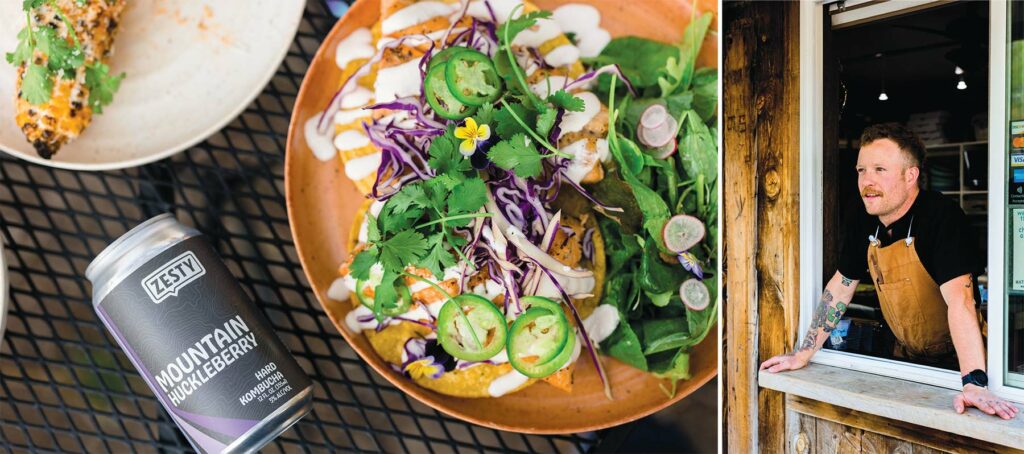
What’s not grown on site is sourced from area farms, ranches, and producers, like potatoes from Kimm’s Potatoes, beef from B Bar Ranch, and even frozen treats from Mountain Fresh Italian Ice.
A few items are sourced from farther afield, like cheese (from Billings), pasture-raised chicken (from Living River Farms in the Bitterroot Valley), and wine. But even in their wine selection, Norris takes care to source natural and organic wines and keep a connection to Montana where they can. For example, one of their vintners out of Oregon is sold under a Big Sky label that uses local artists in Bozeman to design the wine labels.
Norris operates everything—the pool, grill, gardens, and facilities—as a tight-knit team of seven. The chef works closely with his wife to run the kitchen and garden, respectively, creating an informed and inspired menu.
Each year, the grill opens on Memorial Day weekend and stays open through Labor Day. A typical menu includes burgers, smoked meats (smoked on site), primal cuts, salads, and sides like roasted vegetables featuring whatever’s freshest from the garden.
The café, adjacent to the pool, operates year-round and serves pizza, salad, nachos, and rice bowls. The rice bowls and pizzas change weekly to feature ingredients from the garden. The team also runs a canning and dehydrating operation to continue using the previous season’s harvest into winter; the day I visit, last fall’s beans are featured in the rice bowl.
Meanwhile, No Loose Dogs Saloon serves local beer, cider, and kombucha on rotation, in addition to a selection of wines.
Sustainability and stewardship are embedded in the ethos at Norris. Campbell points out a building whose roof will soon be converted to solar. The goal is for the entire facility to be off grid (for electricity) by the end of the year.
“We’re a small business that is trying to make an impact in an area that’s essentially not a town,” Campbell says, referencing the fact that the Norris area isn’t incorporated as a town. “[We’re] just trying to stay sustainable.”
At Norris, the signature hot spring flows into the surrounding wetland and supports neighboring wildlife. Similarly, the benefits of local food appear to fl ow outward to support the health of the entire ecosystem, from the people who visit to the land itself.


